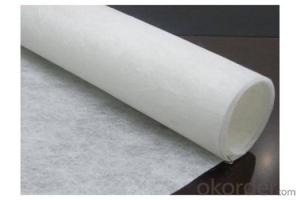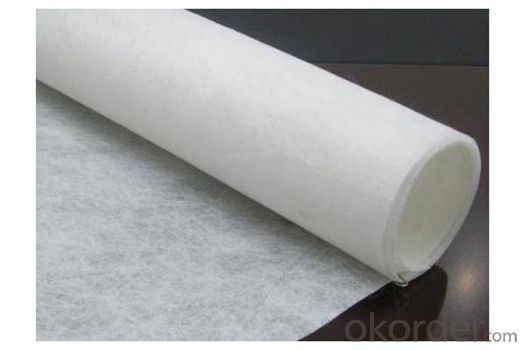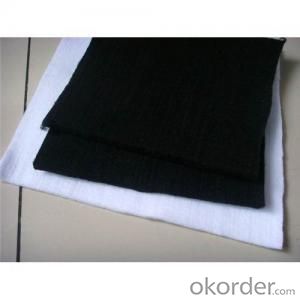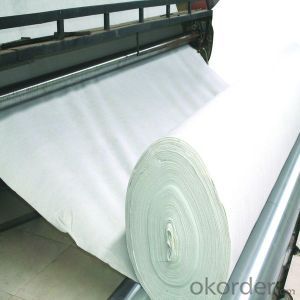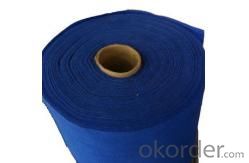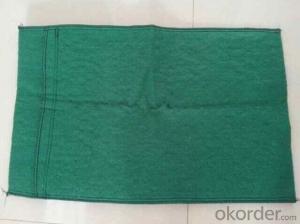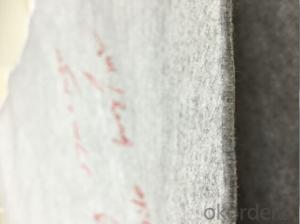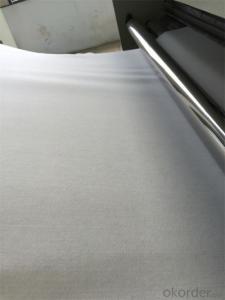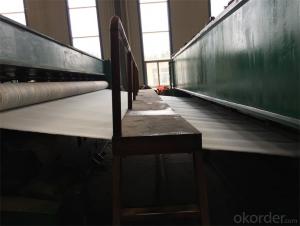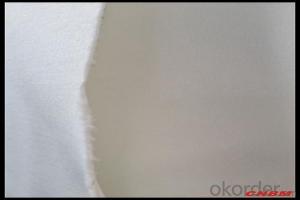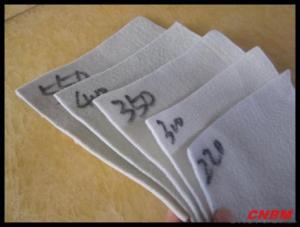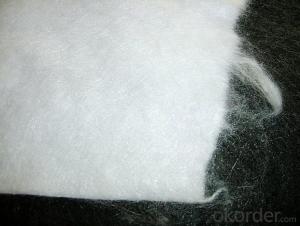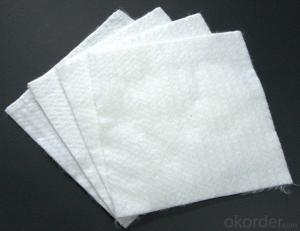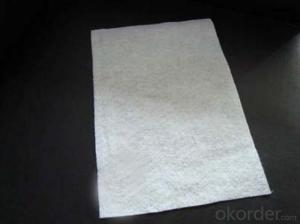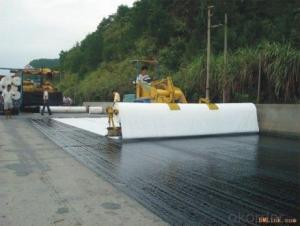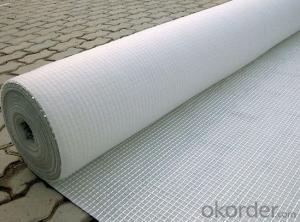Geotextile Noir Non-Woven Geotextile Fabric 300gsm for Highway
- Loading Port:
- China main port
- Payment Terms:
- TT OR LC
- Min Order Qty:
- 3000 m²
- Supply Capability:
- 400000 m²/month
OKorder Service Pledge
OKorder Financial Service
You Might Also Like
Specification
Product Introduction
The needle-punched non woven geotextile is produced from polyester or polypropylene fiber by differentequipment and technology to get different thickness. The main function is filtration, drainage, reinforcement. It has good impermeability and resistance to deformation
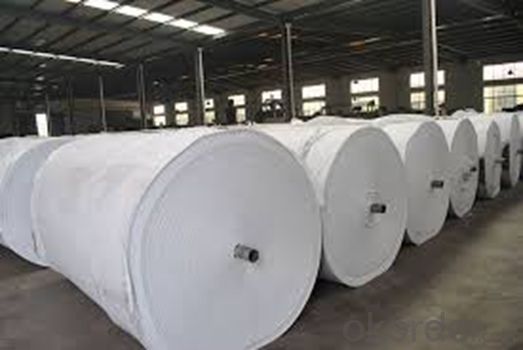


Quality assurance
1.On a regular basis or as per your request,we entrust national testing agencies to conduct quality inspections
2. Strictly in accordance with the ISO9001-2008 international quality system standard,we monitor and manage the whole process throughout production,quality testing,and measurement to ensure product quality
3. For quality-related construction delay or substandard construction(except for damage or losses due to customer’s responsibility or irresistible natural disasters),we have refunding,replacement,and repair services.We will respond to customers’ feedbacks on quality issues within 24 hours.
Packaging & Shipping
Packing: PLASTIC FILM INSIDE, AND WOVEN BAG OUTSIDE
Shipping: About 15 days after receipt the deposit
pecifications
geotextile fabric
permeability,filtration,easy for construction
ISO and CE certificate
Good quality and competitive price
Our Service
FAQ:
Q: What kind of payments does jenor support?
A: T/T, L/C, Cash are accepted.
Q: Do you charge for the samples?
A: Accordeing to our company policy, the samples are free, we only charge the freight fee. And we will return the freight fee during the next order.
Q: Can you produce according to customers' design?
A: Sure, we are professional manufacturer, OEM and ODM are both welcome.
Q: Do you have other products?
A: Yes, please check the pictures:
- Q: What are the cost considerations for geotextile applications?
- The cost considerations for geotextile applications primarily include the initial material cost, installation expenses, and long-term maintenance expenses. The type and quality of geotextile chosen, along with the size and complexity of the project, can significantly impact the upfront costs. Additionally, factors such as transportation, labor, and equipment required for installation should be taken into account. Furthermore, ongoing maintenance, repair, and replacement costs should be considered to ensure the longevity and effectiveness of the geotextile application.
- Q: Who can talk about geogrid, fiberglass and geotextile What is the difference, from the material function, use all aspects of speaking, if the answer is good, I will add more points
- (Woo Yu. Friendship Plaza)
- Q: Can geotextiles be used in landfill lining systems?
- Yes, geotextiles can be used in landfill lining systems. They are often used as a barrier to separate the waste materials from the surrounding soil and groundwater, preventing contamination and promoting environmental protection. Geotextiles provide stability, filtration, and drainage functions in landfill lining systems.
- Q: How do geotextiles help in preventing sinkhole formation?
- Geotextiles help in preventing sinkhole formation by acting as a barrier that reinforces the soil and provides stability. They are placed beneath the soil surface to distribute the load and prevent the movement of soil particles, which is a significant cause of sinkholes. Additionally, geotextiles can improve drainage and filtration, reducing the risk of water accumulation and weakening of the soil, which can also lead to sinkhole formation.
- Q: What are the different geotextile erosion control products available in the market?
- There are various geotextile erosion control products available in the market, including woven geotextiles, non-woven geotextiles, geogrids, geocells, and sediment control devices. These products are designed to prevent erosion, stabilize soil, and protect slopes, embankments, and other surfaces from the damaging effects of water and wind.
- Q: What are the different geotextile installation techniques in reinforcement?
- There are several different geotextile installation techniques used in reinforcement, including direct placement, wrapping, and sandwiching. Direct placement involves placing the geotextile directly on the ground or subgrade and covering it with soil or aggregate. Wrapping involves wrapping the geotextile around a structure, such as a pipe or retaining wall, to provide additional support. Sandwiching involves placing geotextile layers between layers of soil or aggregate to improve stability and prevent erosion. These techniques are used to enhance the strength and performance of various engineering structures.
- Q: How do geotextiles help with reinforcement of soil slopes?
- Geotextiles help with the reinforcement of soil slopes by providing a stable and strong barrier that prevents soil erosion. They act as a protective layer, distributing the weight and forces evenly, enhancing the stability of the slope. Additionally, geotextiles separate the soil layers, preventing intermixing and promoting drainage, which further contributes to the reinforcement of the slope.
- Q: How do geotextiles help with groundwater protection?
- Geotextiles function as a barrier or filter that helps protect groundwater by preventing the infiltration of contaminants into the underground water sources. They aid in separating different layers of soil and preventing the mixing of pollutants with the groundwater, thereby safeguarding the quality and purity of water resources.
- Q: What are the different weight options available for geotextiles?
- Geotextiles typically come in a range of weight options, which can vary from lightweight to heavyweight. These weight options are measured in terms of grams per square meter (gsm) or ounces per square yard (oz/yd²). The specific weight option chosen for a geotextile depends on the project requirements, such as the soil conditions, desired strength, and intended application.
- Q: 300g geotextile GB thickness is how much
- There are a variety of geotextiles. If it is non-woven, then upstairs said correct. If it is woven type, that is not right, it should be about 1mm.
Send your message to us
Geotextile Noir Non-Woven Geotextile Fabric 300gsm for Highway
- Loading Port:
- China main port
- Payment Terms:
- TT OR LC
- Min Order Qty:
- 3000 m²
- Supply Capability:
- 400000 m²/month
OKorder Service Pledge
OKorder Financial Service
Similar products
Hot products
Hot Searches
Related keywords
